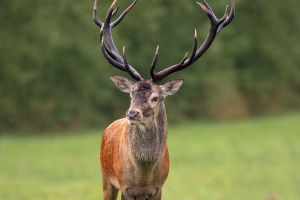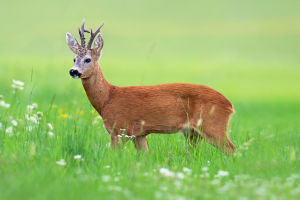Damselflies
In the intricate tapestry of Earth's ecosystems, predators play a pivotal role in maintaining balance and ensuring the health of various populations.
Among these, damselflies emerge as some of the most successful and fascinating predators.
Often overshadowed by their more flamboyant relatives, the dragonflies, damselflies possess a combination of traits and behaviors that underscore their predatory prowess.
Damselflies exhibit a suite of physical characteristics finely tuned for hunting. Their slender, elongated bodies reduce drag, allowing for agile and swift movements through the air and water.
Equipped with two pairs of transparent wings that beat independently, damselflies achieve remarkable maneuverability, enabling rapid changes in direction to intercept prey with precision.
Their large, multifaceted eyes provide nearly 360-degree vision, granting them exceptional ability to detect movement and locate targets from afar.
Additionally, their mouthparts are adapted for grasping and consuming a variety of prey, ranging from small insects to aquatic organisms during their larval stage.
These anatomical features collectively enhance their efficiency as predators, allowing them to exploit a wide range of ecological niches.
Damselflies employ a combination of stealth, speed, and tactical hunting methods that contribute to their success. As adults, they are aerial hunters, often seen darting through the air in pursuit of other insects.
Their flight patterns are both deliberate and opportunistic; they can hover in place to ambush unsuspecting prey or engage in high-speed chases to capture more agile targets.
During their larval stage, damselflies, known as nymphs, inhabit freshwater environments where they are equally adept predators. Nymphs can swiftly snatch prey from the water's surface with remarkable speed and accuracy.
This dual-stage predatory capability allows damselflies to exert influence across both terrestrial and aquatic ecosystems, maximizing their opportunities for sustenance and growth.
The ecological role of damselflies as predators is profound and far-reaching. By controlling populations of various insects, including pests such as mosquitoes and agricultural pests, damselflies contribute to the regulation of ecosystems and the protection of human interests.
Their presence is often an indicator of environmental health, as they require clean water bodies and abundant prey to thrive. This sensitivity to habitat conditions underscores their role in biodiversity maintenance.
Moreover, damselflies exhibit remarkable adaptability to diverse environments, from tropical rainforests to temperate regions, and from stagnant ponds to flowing streams.
This adaptability not only broadens their geographical distribution but also enhances their resilience against environmental changes, further cementing their status as successful predators.
The evolutionary history of damselflies reveals a lineage that has persisted for over 300 million years, showcasing their enduring success as predators. Their ability to evolve and adapt to changing climates, habitats, and prey populations speaks to their genetic and behavioral flexibility.
This longevity is a testament to the effectiveness of their predatory strategies and anatomical adaptations.
Additionally, damselflies have co-evolved with their prey, leading to intricate predator-prey dynamics that foster biodiversity and evolutionary innovation. This evolutionary interplay not only sustains damselfly populations but also contributes to the complexity and resilience of ecosystems at large.


